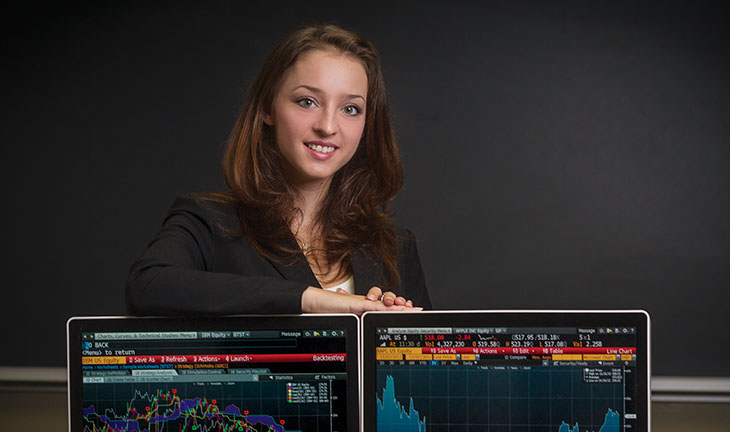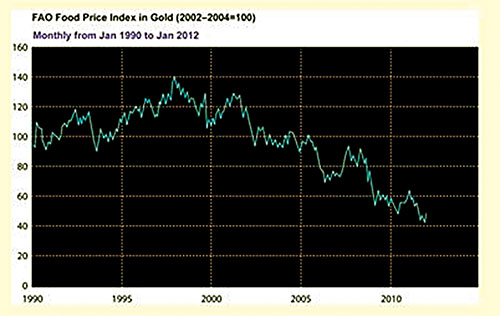
Ballet and Bonds
Kiersten Engel: Senior, Collat School of Business
By Clair McLaffertyPointe shoes brought Kiersten Engel to Birmingham from New York State. After seven seasons as a dancer with the Alabama Ballet, however, Engel decided to concentrate on a new career.
Attracted by UAB’s location, nontraditional student population, and flexible class schedules, Engel enrolled in 2009 as an applied math major. She initially worked toward a concentration in physics—she once wrote a paper on the equations underlying ballet movements—but a finance class altered her career path. “Finance is a tangible way to apply math,” she says.
As a junior she became portfolio manager for the Green and Gold Fund, UAB’s highly successful student-run investment team. At the same time, Engel was using the Bloomberg computer terminals at UAB’s Charles and Patsy Collat School of Business to learn more about financial markets. Access to these professional-level trading tools has been one of the most valuable parts of her UAB experience, Engel says.
Engel’s work with the Green and Gold Fund landed her a summer 2013 internship at Birmingham trading firm R2 Macro, where she did daily research—on a Bloomberg terminal—to help inform the firm’s positions. As a long-term project, she designed a trading system that bought and sold various countries’ bond futures to capitalize on the steepening and flattening of their respective yield curves.
Engel also found time to travel to Tuscaloosa to take the Bloomberg Aptitude Test (BAT), a challenging mix of market knowledge, logical reasoning, and math questions. She earned one of the top 100 scores internationally, which led to a spot at the BAT Summer Intern Challenge, a prestigious networking event for finance students. “It was a great experience designed to help students prepare their resumes and begin job searching,” she says. Several New York-based companies contacted Engel to express interest in her resume.
After graduation in spring 2014, Engel plans to pursue a career designing and analyzing financial trading systems. As an independent study project last summer, she created a trading system “that capitalizes on fluctuations in interest rates and their effect on the prices of long- and short-dated government securities.” She says she is most interested in derivatives systems because they are highly mathematical and because “they’re a little less driven by fear and greed” than other systems.
Since New York City is home to one of the world’s largest financial markets, Engel says there is a strong possibility she will work there after graduation. But she is also considering staying in school to earn a master’s degree in financial engineering.
Pop QuizKiersten Engel had one of the 100 highest scores internationally on the Bloomberg Aptitude Test, acing questions like this: “Below is a chart of the food price index in gold since 1990. Which of the following choices is the most likely explanation for the change in the index from the late 1990s through 2010?” Can you figure it out? |
 |
| 1. Food prices have risen by a greater percentage than gold prices. 2. Gold prices have risen by a greater percentage than food prices. 3. Gold prices are in a bubble. 4. Food prices are in a bubble. To see the answer, highlight the hidden text below: Answer: 2—The chart shows that the cost of food in terms of gold has fallen over the time period shown, which means that gold prices increased by a greater percentage than food prices in that period. For more sample questions, see about.bloomberginstitute.com. |
Get Involved
• Learn more about UAB's academic programs in finance.
• Give something and change everything for students in the UAB Collat School of Business.